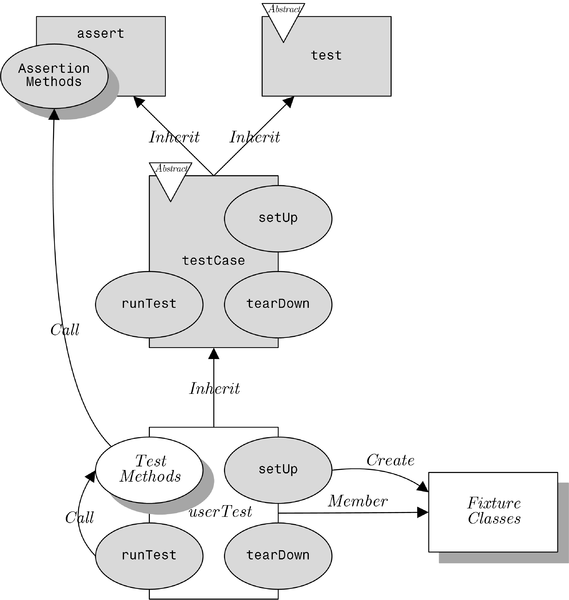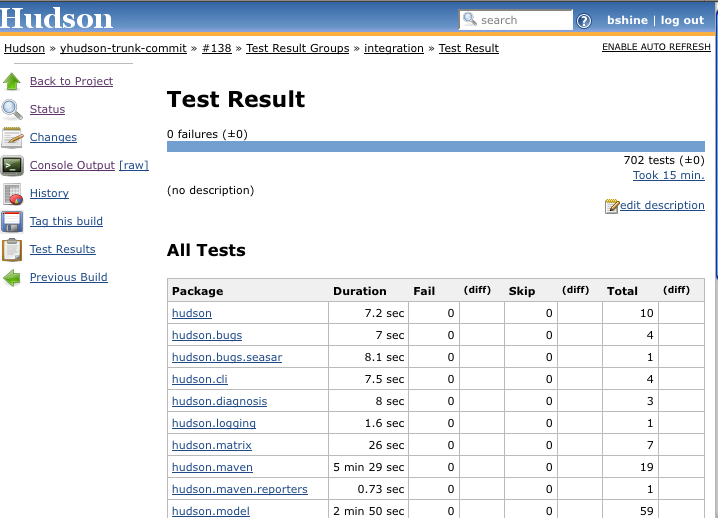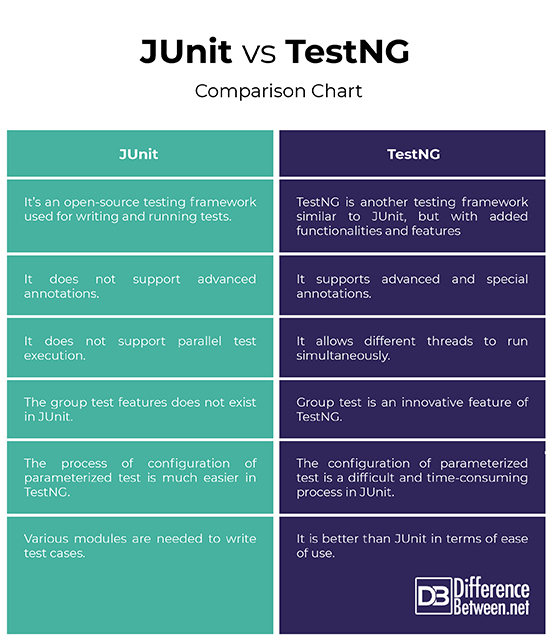Difference Between JUnit and TestNG
Software testing is one of the most important phases of the software development lifecycle that involves identifying and finding bugs in the program and making sure the software is big free. Testing is like quality control which ensures quality in software development. There are many types of testing involved throughout the process that include unit testing, integration testing, functional testing, performance testing, and acceptance testing. Unit testing is done during the coding, in which the small testable parts of a program or application called units, are identified and tested to make sure the program behaves as expected. Unit testing is the cornerstone of effective software development.
Testing can be done either manually or automatically. Automated testing is used most commonly these days because the tests can be performed continuously at different phases of the software development lifecycle in less time possible. Many testing frameworks are used for unit testing based on the Java platform. Currently, JUnit and TestNG are the most popular and commonly used Java frameworks for unit testing. Both the frameworks are very similar in terms of functionality, but TestNG offers additional features that makes it more powerful than JUnit. Although they both use commonly used functionalities, there are slight differences which put one of them over the other. Let’s take a look at the two.
What is Junit?
JUnit is one of the widely used Java frameworks used for writing and running tests. It is used to create Selenium WebDriver tests in Java. It was originally based on SUnit, a unit testing framework written in Smalltalk. The first version of JUnit was released in 1997 and since then, it has become the de facto standard for testing in the Java world adopted in many different languages and by many tools. The latest version JUnit 5 is a complete remake of the JUnit in Java 8 redesigned to overcome the limitations of previous JUnit versions.
What is TestNG?
TestNG is yet another popular Java framework similar to JUnit, in which tests are organized in classes. However, TestNG overcomes the limitations of JUnit with additional functionalities and special annotations that are not supported by JUnit. Unlike JUnit, TestNG reuses the same test class instance for all test methods. TestNG is more flexible in the way it passes parameters into unit tests. And another feature that sets this framework apart is the ability to put test methods in groups. Additionally, it allows different threads to run simultaneously which allows results in reduced execution time.
Difference between JUNit and TestNG
-
Basics of JUNit and TestNG
JUNit is one of the most popular testing frameworks used for unit testing for the Java programming language. It is the de facto standard for testing in the Java world. It’s an open-source testing framework used by countless Java projects for writing and running tests. It can be incorporated with the world’s most popular automation tool Selenium. TestNG is another popular testing framework used with Selenium WebDriver and is quite similar to JUnit, but with added functionalities and features such as parallel test execution, parameterization, and more. It is inspired by JUnit and NUnit.
-
Annotations of JUNit and TestNG
Both are annotations based testing frameworks that use a few similar annotations such as @Test, @BeforeClass, @AfterClass for the testing methods. Both are similar in nature and behavior. However, TestNG overcomes the limitations of JUnit with additional functionalities and special annotations that are not supported by JUnit. The special annotations include @BeforeTest, @AfterTest, @BeforeGroups, @AfterGroups, @BeforeSuite, @AfterSuite, and so on.
-
Parameterized Test for of JUNit and TestNG
Both the test frameworks support configuration of parameterized test which allow them to test the same code under several conditions, but differ in the way they implement it. Parameterized test helps the developer save a great deal of time in executing same tests with different input values. TestNG is more flexible in the way it passes parameters into unit tests which makes the process of configuration of parameterized test much easier in TestNG than JUnit. JUnit, on the other hand, takes more time to configure a parameterized test.
-
Group Test for of JUNit and TestNG
Group test is an innovative feature mainly done to meet the practical need and can be administered to a group of individuals at a time which not only saves time but also money. It’s a powerful feature in TestNG which allows you to perform sophisticated groupings of test methods and execute multiple tests using the annotation “Groups”. It provides more flexibility in how you partition your tests which eliminates the need of recompiling. The group test features does not exist in JUnit.
-
Parallel Test for of JUNit and TestNG
TestNG provides multiple ways to execute tests in separate threads which helps developers to run test classes/methods in parallel. This means TestNG allows different threads to run simultaneously which allows results in reduced execution time and verification time for a multi-threaded code in the applications. As more tests are executed concurrently, the total execution time is reduced significantly. JUNit, on the other hand, does not support parallel test execution.
JUnit vs. TestNG: Comparison Chart
Summary of of JUNit and TestNG
Both are the most popular frameworks used for unit testing based on Java platform, but considering JUnit has a long standing history, it has a much larger user group in the Java community. It’s been the standard Java framework for unit testing for years, until TestNG came to the picture. TestNG is yet another popular Java testing framework specially designed to overcome the limitations of JUnit in terms of functionality. Compared to JUnit, TestNG provides additional and more powerful features such as parameterized testing, group testing, parallel testing, data-driven testing, and so on. Additionally, the more advanced and special annotations of TestNG make it more powerful than JUnit. However, the main difference lies in how tests are organized and executed.
- Difference Between Caucus and Primary - June 18, 2024
- Difference Between PPO and POS - May 30, 2024
- Difference Between RFID and NFC - May 28, 2024
Search DifferenceBetween.net :
Leave a Response
References :
[0]Image credit: https://www.flickr.com/photos/saschabshine/4209616342
[1]Image credit: https://upload.wikimedia.org/wikipedia/commons/thumb/6/64/Junit.png/569px-Junit.png
[2]Deinum, Marten, et al. Spring 5 Recipes: A Problem-Solution Approach. NYC: Apress, 2017. Print
[3]Gundecha, Unmesh. Selenium Testing Tools Cookbook. Birmingham: Packt Publishing, 2015. Print
[4]Appel, Frank. Testing with JUnit. Birmingham: Packt Publishing, 2015. Print
[5]Gulati, Shekhar and Rahul Sharma. Java Unit Testing with JUnit 5: Test Driven Development with JUnit 5. NYC: Apress, 2017. Print



